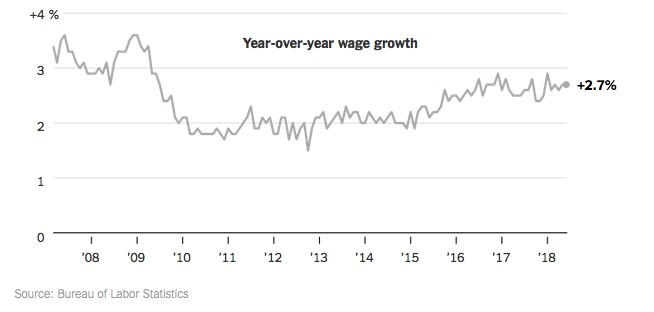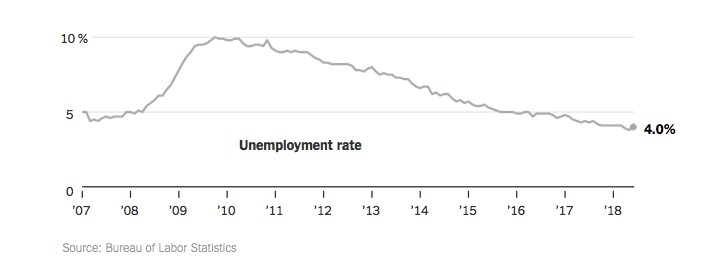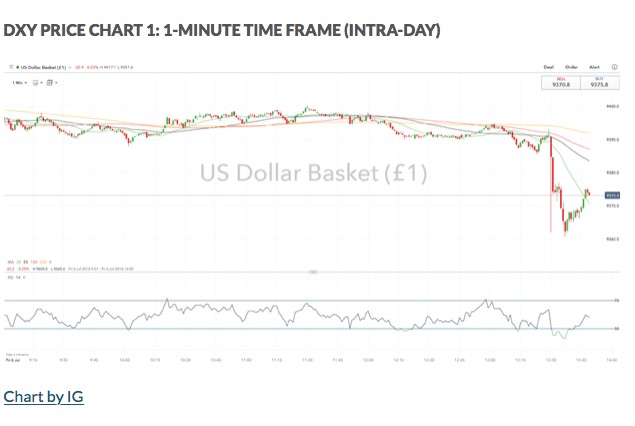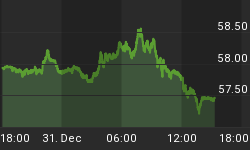The June jobs report topped forecaster estimates, recording 213,000 new jobs, but unemployment was a different story: While expectations were 3.8 percent, the was actually an increase in unemployment to 4 percent.
But what everyone was looking at this morning was the wage story: Though new jobs are piling up and a troubling labor shortage looms, wages haven’t yet responded upwards as expected.
According to the Bureau of Labor Statistics, hourly wages increase by only 0.2 percent to 2.7 percent (May had seen a 0.3-percent increase).
Annual wage growth recorded in June was expected to increase to 2.8 percent—more than at any time since 2009, with economists predicting it could hit 3.0 percent by the end of the year. At this level of unemployment, wage increases have historically been closer to 3-4 percent.
In charts, the numbers looked like this:

(Click to enlarge)

(Click to enlarge)

(Click to enlarge)
That wage growth for June actually slowed has given the markets a bit of a reprieve from nervous investor fears of inflation that would prompt a more aggressive Fed.
The Dow erased losses as the market opened Friday in response, and the S&P 500 went positive, gaining over 27 points, while the Nasdaq gained close to 5 points.
Lower unemployment generally leads to higher wages, but the effect has been slower in manifesting. The concern is that this also then leads to higher inflation, which could trigger more Fed interest rate hikes as a counter measure. There have been two interest rate hikes so far this year, with a third planned and a fourth highly likely.
But the jobs report wasn’t expected to be the typical market mover that it because a critical juncture in the Trump-led global trade war is overshadowing it, making tracking the direct response to jobs and wages more difficult. Related: What Sparked Gold’s Unexpected Rally?
Trump tariffs went into effect at midnight EST, officially putting a 25-percent tariff on $34 billion in high-tech Chinese imports, with Beijing simultaneously retaliating with the same amount, targeting U.S. autos and agricultural products.
Ironically, the trade war could serve as its own counter-balance to a more aggressive Fed response by hitting the U.S. economy.
In Thursday trading, the dollar was mixed, leaning toward the negative, after the Fed seemed to indicate that despite economic concerns over a trade war, rate increases are still on the table for September and December.
On Friday morning, the USD index fell, nonetheless, on the wage data.

(Click to enlarge)
It’s a fairly predictable pattern (trade wars aside). In February, for instance, the dollar fell into negative territory after the jobs report topped expectations with 313,000 new jobs, but then it pared losses when wage growth was only moderate. This time around, however, the response to slower wage growth is muted because the Fed has indicated that four rate hikes are imminent, regardless.
Related: Tesla’s Model 3 Backlog At 420,000 Orders
Beyond wages, the highlight of the June jobs report was a snowballing labor shortage, with reports emerging of employers’ difficulty in finding qualified workers at a time when there are 6.7 million job openings.
“Business’ number one problem is finding qualified workers. At the current pace of job growth, if sustained, this problem is set to get much worse,” Mark Zandi, chief economist at Moody’s Analytics, said in a statement. “These labor shortages will only intensify across all industries and company sizes.”
Since 2010, the U.S. has added almost 19 million new jobs and the labor pool hasn’t kept pace either in numbers or skill.
The economy has "bumped against the proverbial labor wall," David Rosenberg, chief economist and strategist at Gluskin Sheff, said in his morning note Thursday, carried by CNBC. "Inflation pressures will intensify and the Fed will be forced to act more aggressively, just as has been the case in the past. There is no Presidential Tweet that will stop Mother Nature from taking its course."
By Fred Dunkley for Safehaven.com
More Top Reads From Safehaven.com:

















